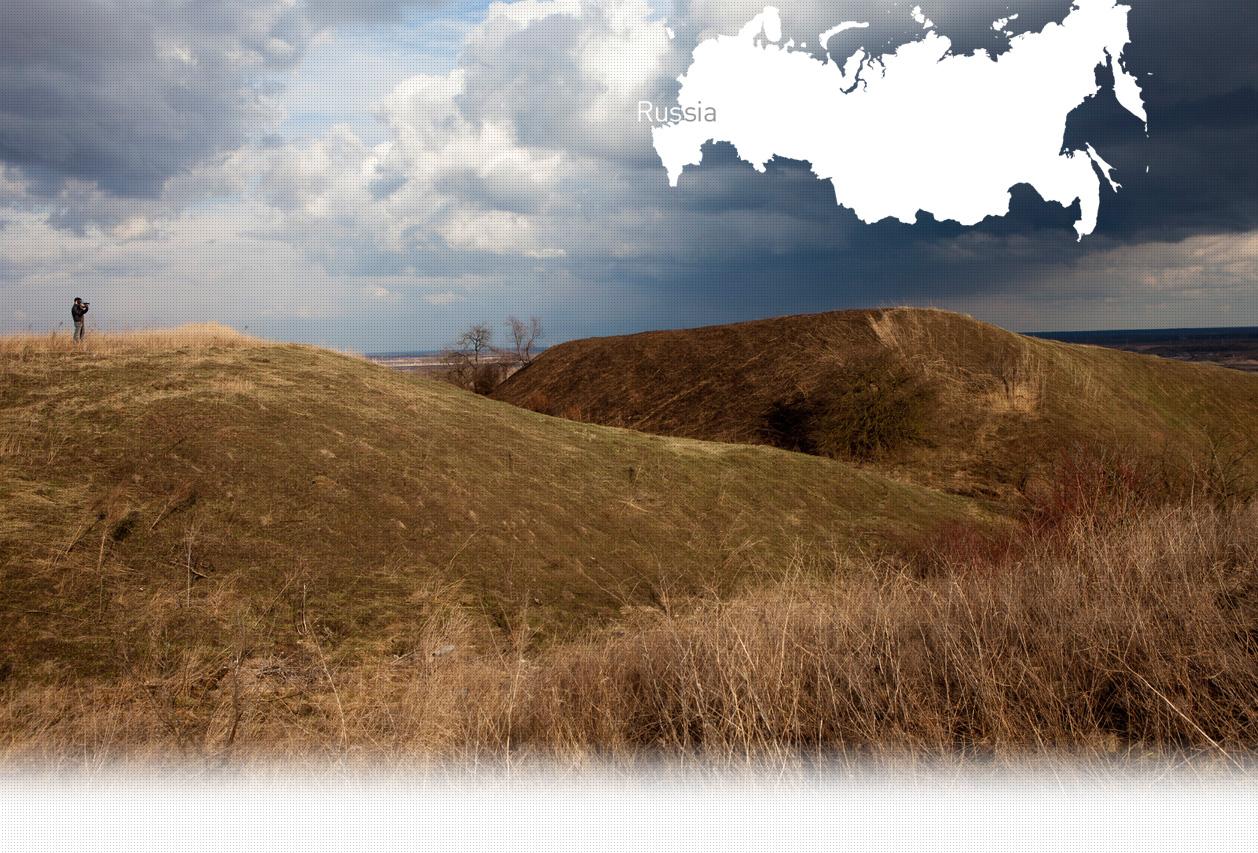

1 Killing site(s)
Anatoliy Ia., born in 1928: “The whole lot of refugees from Bessarabia, hundreds of people, arrived to the town. At the beginning they were all placed in a school building, but later some of them managed to rent separate flats. When the Romanians were approaching, the richer ones hired vehicles and left to Uzbekistan, and the poorest ones stayed.” (Witness n° 754, interviewed in Poltavskaya, on September 20, 2017)
“On April 1, 1943, on the village outskirts, the commission discovered three large pits filled with water, in which the bodies of 57 shot villagers floated, including nine children aged from 10 months to 15/16 years. [...] In one of these pits, the commission found the corpses of Jewish families, 24 people in all, including an evacuee from Sevastopol: Dora Vainshtein, 28 years old, and her two young children. The barbarous fascists had sprinkled her legs with flammable liquid and set it on fire; […].” [Act drawn up by The Red Army commission, on April 3, 1943; Fond 51, Opis 958, Delo 52]
Poltavskaya is a village located on the Kuban River, 65 kilometers west of Krasnodar. Founded in 1794, it is one of the first forty settlements of Kuban Cossacks in the area. In 1932-1933, during the period of collectivization, the local population suffered from the artificial famine deliberately orchestrated by the Soviet regime as part of its policy of repression. During that time hundreds of local families died of hunger as they were not allowed to leave their residences. Later the rest of population was forcibly relocated to the northern regions of Russia, and Poltavskaya was re-settled by the families of the Soviet military. At the outbreak of WWII hundreds of refugees from Bessarabia arrived in the town. Initially they were all placed in a school building, but later some of them managed to rent separate flats. When the Romanians were approaching, the richer ones hired vehicles and left to Uzbekistan, and the poorest ones stayed. Poltavskaya was occupied in early August, 1942.
The Germans arrived shortly after the Romanian units. They stayed in the houses of the locals. Soon after the occupation a local police force was created. The commandant’s office was established in the current building of the local administration. According to the local villager interviewed by Yahad-In Unum, the Jewish refugees were shot on the other side of the river. The Romanians escorted the Jewish families in groups of five or six people. The victims didn’t have any belongings with them. There was a mother with a small child among the victims. The Romanian guards drowned the child in the river. The victims had to dig pits themselves and after were shot.
Do you have additional information regarding a village that you would like to share with Yahad ?
Please contact us at contact@yahadinunum.org
or by calling Yahad – In Unum at +33 (0) 1 53 20 13 17